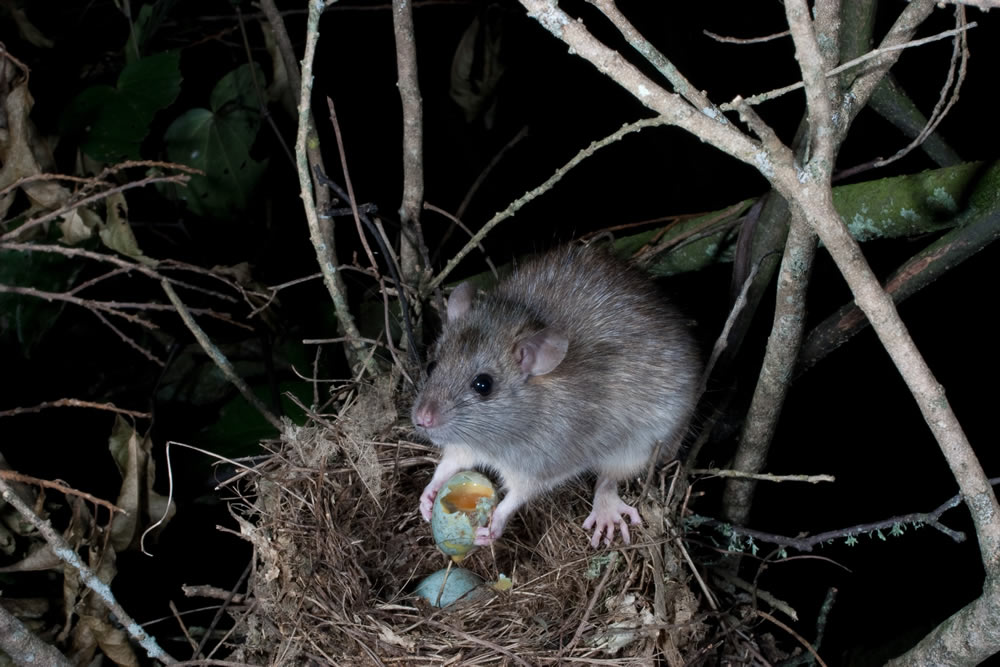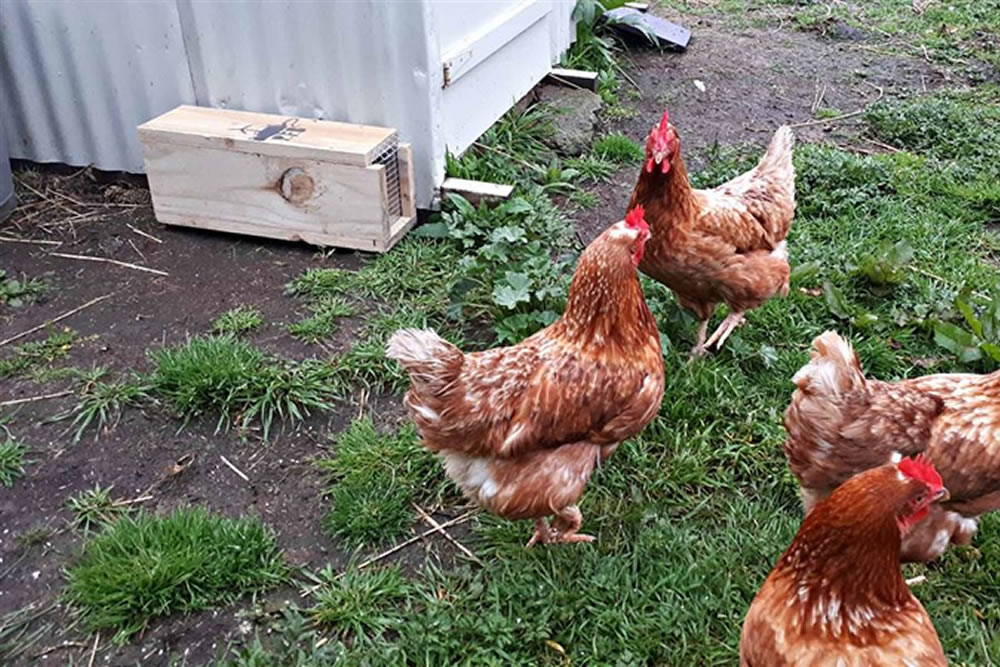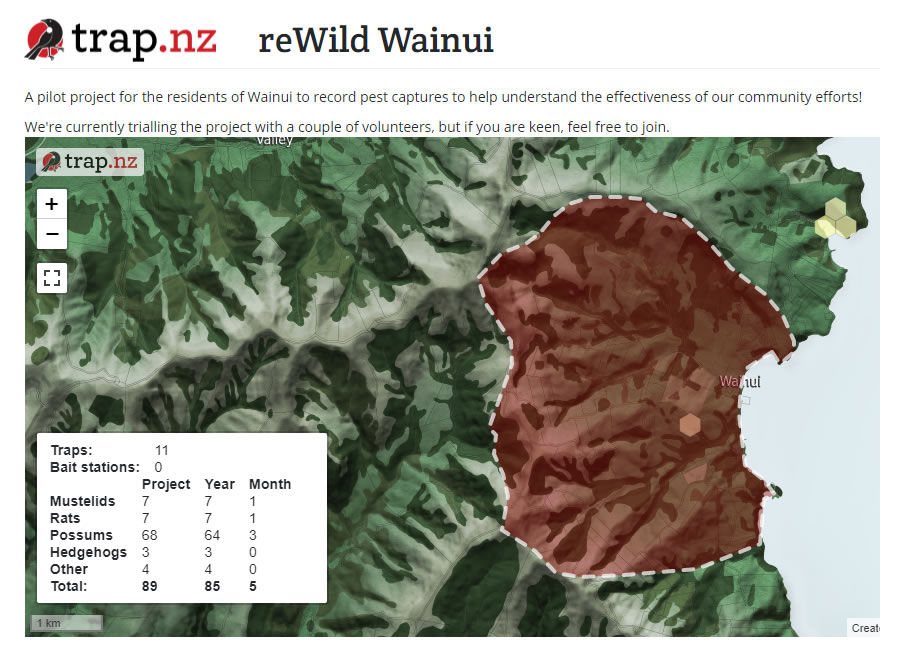If rats are your thing (and they should be) you’ve possibly by now chosen a trap, so it’s time to figure out how to catch the critters!
Be aware, you may not hit rat nirvana on day 1, it can take time and often it’s a learning process to see what works on your property. Often this is a combination of trap placement, lure or bait, the time of year, and understanding their behaviour.
Step 1: Have you got rats?
It might sound silly, but step 1 is to check if you have rats. The traditional way is by using chew cards or tracking tunnels. But the thing is, you do have rats, and these tools will at best only give you an idea of how many. The best way is to use a camera, we’ll talk more about this another time.
Step 2: Trap Placement
Trap placement is super important. Like they say “fish where the fish are”! Here are some starting points.
- In urban environments rats tend to run along walls or hard objects, think how this might apply in your environment. This might be a natural feature, such as a waterway or fence line.
- Consider where pests might be in your backyard and why. Many predators can be found near water and food sources such as fruit/nut trees, roses, compost bins, and chicken houses.
- While rats are typically nocturnal, they often still seek “cover”. Placing a trap under a bush that provides cover can be effective
- Place traps on a flat surface and make sure that the entrance and exit are clear of obstructions including long grass, basically so that there is a “sight line” through the trap
- Place traps in warm, dry spots as many predator pests don’t like to get their feet wet (particularly feral cats and ferrets). Avoid putting traps in ground dips where water can pool or in soggy patches.
- Rats are neophobic (wary of new things) so put the tunnel in your chosen location, add bait in and around the tunnel, but don’t set the trap for a week or two.
- The reality is, some trap locations will perform better than others. If you’ve not had significant results after a few weeks in a location, move the trap and try again.
- Try disturbing the ground in front of the box, as this can arouse curiosity
- If rats aren’t hungry they won’t risk entering the box and trap. Ensure there are no “free food” sources nearly.
Step 3: Baits or Lure to Use
Rats often pass their food preferences between them, and ‘teach’ others about a food source. Effective lures include:
- Peanut butter, the standard!
- Peanut butter mixed with rolled oats
- Nutella
- It’s good also to try some variations, that could include …
- Chocolate, bacon (raw, unsmoked), lard, or dried fruit
- Check your bait as often as you can and refresh your lure every two weeks
- Try lure on the mesh at the front of the safety box and place a blob just inside the entrance. Free food with no associated negative consequences will make them less cautious about entering the box
- Make a lure trail leading to your trap. You could use peanut butter, or something like pet food pellets which your rat might associate with reward without consequences
- Place the lure trail and the trap along a known rat run, perhaps against a wall or along a fence
Step 4: Record your catches!
The reason behind reWild Wainui was to help connect Wainui’s community of new or existing trappers. The goal is to understand the successes we are all having, and help us achieve even better results through sharing knowledge.
Recording your catch is important to understand how many we are catching, but also what traps are working, what bait is most effective, and where we are catching them so we can identify hot spots or gaps.
We can help you get setup on Trap.nz, and they have a good app to help record your catches.
Download our step-by-step guide for registering on Trap.nz, it’s easier than you might think!
Rat Trapping Tips
- Always wear gloves when handling your trap or catches. Gloves prevent you catching leptospirosis or other rodent-borne diseases. They also avoid transferring human smells, which can deter rats.
- Place the lure in the box and around the entrance without setting the trap for a week or two, so the rats get used to entering the box. This helps establish your trap as a source of food and creates scent trails that other rats will follow.
- Place traps along features such as walls, fence lines, or waterways, basically the easiest path to travel along.
- Using a camera you may identify these pathways, then place your traps there!
- Set your trap/tunnel combo on level ground. Rats are put off by unstable traps.
- Check and rebait your traps regularly, especially when starting out.
- Don’t be afraid to move your trap after 2 – 3 weeks if you are having no success.
- Set traps on lines 100m apart with a trap every 50m (100×50m), or closer in areas with a large number of rats.
- While rats are intelligent, they aren’t put off by the sight or smell of a deceased compadre. In fact, because they are social animals, they may actually be attracted to a trap that has recently had a dead beast in it … so don’t feel the need to clean your gear.
- Download DOCs excellent Predator Free 2050 “Practical Guide To Trapping” (PDF download), it has a wealth of knowledge for the keen trappers!
- Even better, download our guide for trapping rats in Wainui, it’s a short one pager (well, double sided) that will get you up and trapping quickly! Download our rat trapping guide here.
Rat Facts

Rats are a common pest, in our houses and in the bush. We have two main types so it’s important to understand the type of rat your trying to catch to improve your chances.
Rat Traps

There are many different types of rat traps available, here’s our take which traps are likely to be most effective for you.
Rat Trapping Tips

While rats are numerous, the are wily creatures and can present a challenge to catch. Here’s the what, where and how of trapping rats!
Let’s work together to help reWild Wainui!
Join our community initiative to reduce Weeds, remove Pests and replant Natives.
